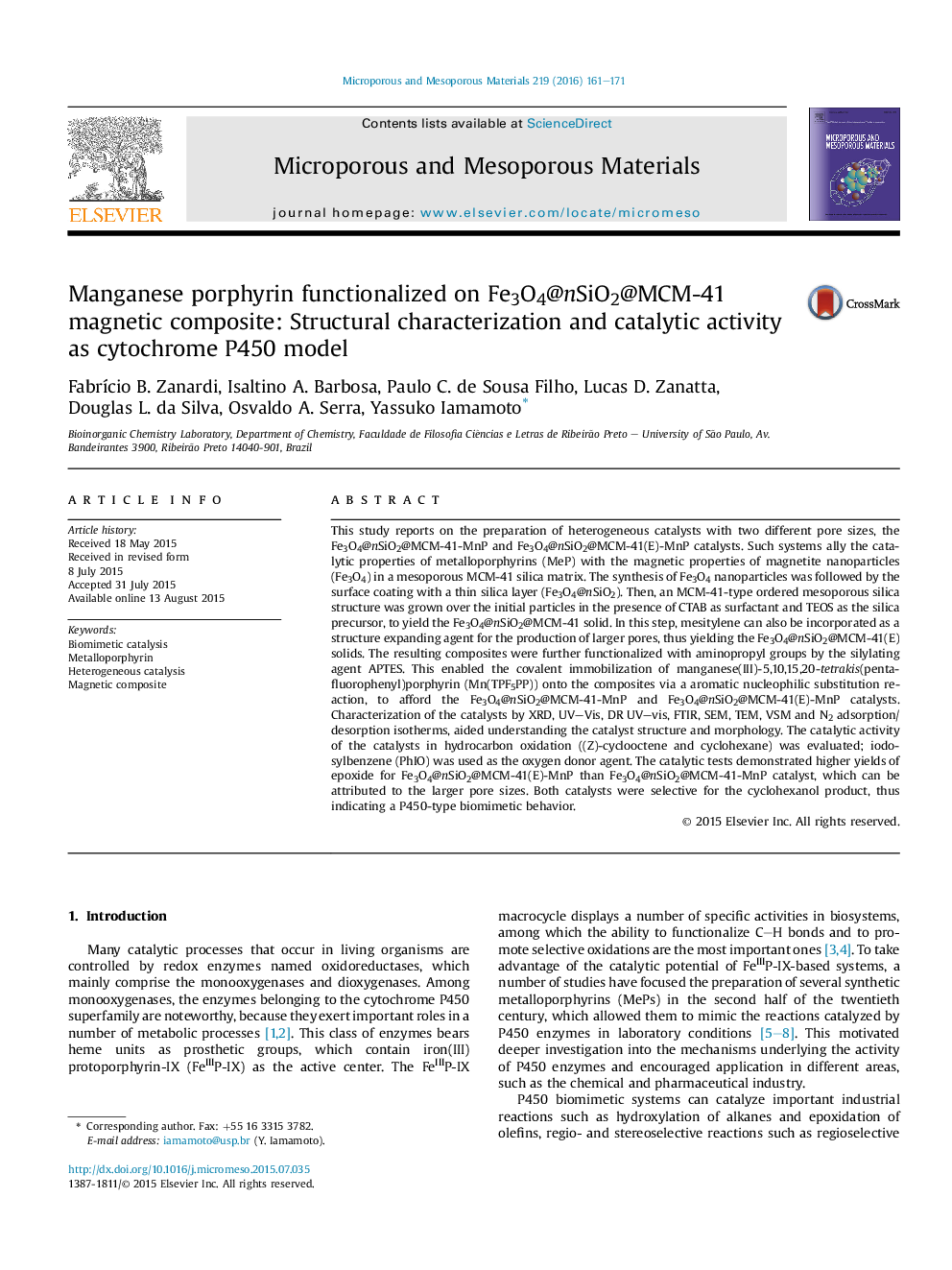| Article ID | Journal | Published Year | Pages | File Type |
|---|---|---|---|---|
| 72398 | Microporous and Mesoporous Materials | 2016 | 11 Pages |
•Success in the synthesis of catalysts with two different pore sizes.•The Fe3O4@nSiO2@MCM-41(E)-MnP catalyst was most effective in the oxidations.•The Fe3O4@nSiO2@MCM-41(E)-MnP catalyst proved most stable.•Both catalysts were selective for the biomimetic product (cyclohexanol).
This study reports on the preparation of heterogeneous catalysts with two different pore sizes, the Fe3O4@nSiO2@MCM-41-MnP and Fe3O4@nSiO2@MCM-41(E)-MnP catalysts. Such systems ally the catalytic properties of metalloporphyrins (MeP) with the magnetic properties of magnetite nanoparticles (Fe3O4) in a mesoporous MCM-41 silica matrix. The synthesis of Fe3O4 nanoparticles was followed by the surface coating with a thin silica layer (Fe3O4@nSiO2). Then, an MCM-41-type ordered mesoporous silica structure was grown over the initial particles in the presence of CTAB as surfactant and TEOS as the silica precursor, to yield the Fe3O4@nSiO2@MCM-41 solid. In this step, mesitylene can also be incorporated as a structure expanding agent for the production of larger pores, thus yielding the Fe3O4@nSiO2@MCM-41(E) solids. The resulting composites were further functionalized with aminopropyl groups by the silylating agent APTES. This enabled the covalent immobilization of manganese(III)-5,10,15,20-tetrakis(pentafluorophenyl)porphyrin (Mn(TPF5PP)) onto the composites via a aromatic nucleophilic substitution reaction, to afford the Fe3O4@nSiO2@MCM-41-MnP and Fe3O4@nSiO2@MCM-41(E)-MnP catalysts. Characterization of the catalysts by XRD, UV–Vis, DR UV–vis, FTIR, SEM, TEM, VSM and N2 adsorption/desorption isotherms, aided understanding the catalyst structure and morphology. The catalytic activity of the catalysts in hydrocarbon oxidation ((Z)-cyclooctene and cyclohexane) was evaluated; iodosylbenzene (PhIO) was used as the oxygen donor agent. The catalytic tests demonstrated higher yields of epoxide for Fe3O4@nSiO2@MCM-41(E)-MnP than Fe3O4@nSiO2@MCM-41-MnP catalyst, which can be attributed to the larger pore sizes. Both catalysts were selective for the cyclohexanol product, thus indicating a P450-type biomimetic behavior.
Graphical abstractFigure optionsDownload full-size imageDownload as PowerPoint slide
